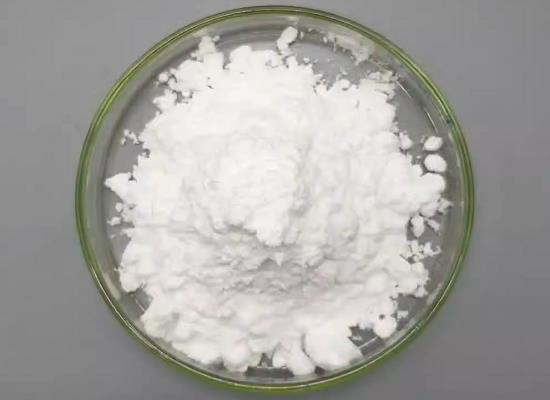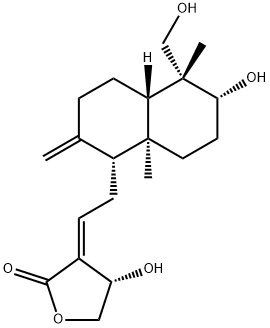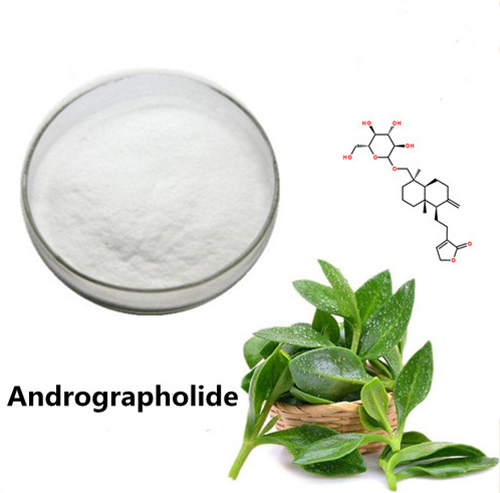Exploring the Therapeutic Potential and Pharmacokinetics of Andrographolide in Inflammation and Cancer
General Description
Andrographolide ( a labdane diterpenoid) is a major compound isolated from the plant Andrographis paniculata (Burm. f) wall. Ex. Nees (AP). Leaves of the plants contain a major quantity (0.054 – 4.686%) of Andrographolide, and a small concentration of Andrographolide is also presented in the stem, flowering tops and roots. In addition, the bioactive chemical constituents isolated from the extract of AP mainly includes Andrographolide, 14-deoxy-11,12-didehydroandrographolide (14-DDA), 14-deoxyandrographolide (14-DA), neoandrographolide, 14-deoxy-14,15-didehydro Andrographolide, andrograpain, isoandrographolide, 14-acetyandrographolide.

AndAndrographolide a secondary metabolite, and therefore, it is influenced by environmental and seasonal factors. The concentration oAndrographolidede varies in different plant parts and geographical distributions of the species.
Structure
Andrographolide is a versatile natural moiety containing three hydroxyl groups (primary, secondary and allylic alcohol) with an exocyclic double bond and lactone ring. As far as the stereochemistry Andrographolidede is concerned, it contains two cyclohexane rings in chair conformation, a γ-lactone bridge by Δ12(13) in E-configuration, and the γ-lactone ring exists in twisted conformation.
Biological activity
Andrographolide and its derivatives gained widespread attraction in the scientific community worldwide for their different pharmacological activities[1]. Andrographis paniculata (AP) and its major bioactive constituenAndrographolidede have been reported for immunostimulatory, antidiabetic, hypolidemic, antiviral, antibacterial, antitumor, antidiabetic, antimalaria, hepatoprotective and antiscorpion venom activities. In a preclinical toxicity studyAndrographolidede was found to possess a high safety profile with no pathological changes and could be a good candidate for clinical trials. There are several clinical trials that demonstrate the positive effects of AP and Andrographolide on uncomplicated upper respiratory tract infections, including sinusitis, common cold, hypertriglyceridemia, and autoimmune disorders such as ulcerative colitis and rheumatoid arthritis. Andrographolide was also found to minimize the HIV symptoms in infected patients.
[1] Zeng B, Wei A, Zhou Q, et al. Andrographolide: A review of its pharmacology, pharmacokinetics, toxicity and clinical trials and pharmaceutical researches. Phytother Res. 2022; 36(1): 336-364.
[2] Gulshan Kumar . “Andrographolide: Chemical modification and its effect on biological activities.” Bioorganic Chemistry 95 (2020): Article 103511.
References:
[1] BIN ZENG. Andrographolide: A review of its pharmacology, pharmacokinetics, toxicity and clinical trials and pharmaceutical researches.[J]. Phytotherapy Research, 2022, 36 1. DOI:10.1002/ptr.7324.[2] GULSHAN KUMAR . Andrographolide: Chemical modification and its effect on biological activities[J]. Bioorganic Chemistry, 2020, 95. DOI:10.1016/j.bioorg.2019.103511.
Related articles And Qustion
See also
Lastest Price from Andrographolide manufacturers

US $1200.00-1100.00/ton2025-09-30
- CAS:
- 5508-58-7
- Min. Order:
- 1ton
- Purity:
- 99%
- Supply Ability:
- 1000T/M

US $790.00/g2025-05-24
- CAS:
- 5508-58-7
- Min. Order:
- 1g
- Purity:
- 99 %
- Supply Ability:
- 500 Kg



